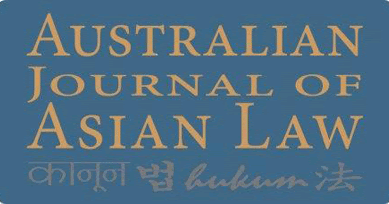OPEN ACCESS PUBLICATIONS
Below are a select number of my publications available for open access download. A full list of publications is available on my faculty website. Pre-print downloads are available on my SSRN and academia.edu pages. My Google Scholar page also contains a partial list of citations to my publications.
2024

2023
Australian Journal of Asian Law, Vol. 24(1), September 2023
JUDICIAL ATTITUDES TOWARDS FOREIGN DOMESTIC HELPERS IN THE HONG KONG CRIMINAL COURTS
Asia Pacific Law Review, Vol 32 (1), 2024

INDONESIA'S REVISED CRIMINAL CODE AND THE DEATH PENALTY - PROGRESS AMID THE GLOOM?
2022
HOLDOUTS IN THE SOUTH PACIFIC: EXPLAINING DEATH PENALTY RETENTION IN PAPUA NEW GUINEA AND TONGA
International Journal for Crime, Justice and Social Democracy, Vol 11(3), 2022
WORTHLESS CHECKS? CLEMENCY, COMPASSIONATE RELEASE, AND THE FINALITY OF LIFE WITHOUT PAROLE
EXECUTIVE CLEMENCY DURING THE CORONAVIRUS PANDEMIC: A GLOBAL ANALYSIS OF LAW AND PRACTICE
International Criminology, Vol 2 (2), 2022
CO-SPONSORSHIP, NOTE VERBALE, AND ASSOCIATION BEHAVIOUR AT THE UNGA: AN ANALYSIS OF THE DEATH PENALTY MORATORIUM RESOLUTIONS
The International Journal of Human Rights, Vol 26 (1), 2022
SUSPENDED EXECUTION BEYOND CHINAS BORDERS
The International Journal of Human Rights, Vol 25 (1), 2021

THE CRIMINAL LAW SYLLABUS AND THE REALITIES OF LEGAL PRACTICE IN HONG KONG
Legal Education Review, Vol 30 (1), 2020
DEADLY JUSTICE WITHOUT MERCY IN ASIA?
International Journal of Comparative and Applied Criminal Justice, Vol 46 (2), 2020
MAKING SENSE OF THE VICTIM'S ROLE IN CLEMENCY DECISION MAKING
International Review of Victimology, Vol 26 (1), 2020

SU'UD RUSLI'S CONSTITUTIONAL COURT CHALLENGE: OVERHAULING CLEMENCY IN INDONESIAN DEATH PENALTY CASES?
Australian Journal of Asian Law, Vol 19 (2), 2019
VICTIM-PERPETRATOR RECONCILIATION AGREEMENTS: WHAT CAN MUSLIM-MAJORITY JURISDICTIONS AND THE PRC LEARN FROM EACH OTHER?
International & Comparative Law Quarterly, Vol 66 (4), 2017
2021
2020
Asian Journal of Law and Society, Vol 9 (1), 2022
2019
2017

DEC AND SCHOOL OF LAW: REFRAMING THE COURSEWORK CURRICULUM IN LI JUAN JULIE ET AL (EDS), CREATIVITY AND INNOVATION IN HIGHER EDUCATION
City University Hong Kong Press (2021)








THE POLITICS OF ABOLITION: REFRAMING THE DEATH PENALTY'S HISTORY IN COMPARATIVE PERSPECTIVE
Punishment & Society, 2024



HOW CAN LEGAL EDUCATION SPEAK TO THE DISCOVERY-ENRICHED CURRICULUM?
Asian Journal of Legal Education, Vol 4 (1), 2017
2016

IS DIYA A FORM OF CLEMENCY?
Boston University Law Journal, Vol 34 (1), 2016
2008

JUSTICE FOR SERIOUS CRIMES COMMITTED DURING 1999 IN TIMOR-LESTE: WHERE TO FROM HERE?
East Timor Law Journal, Vol 1, 2008


